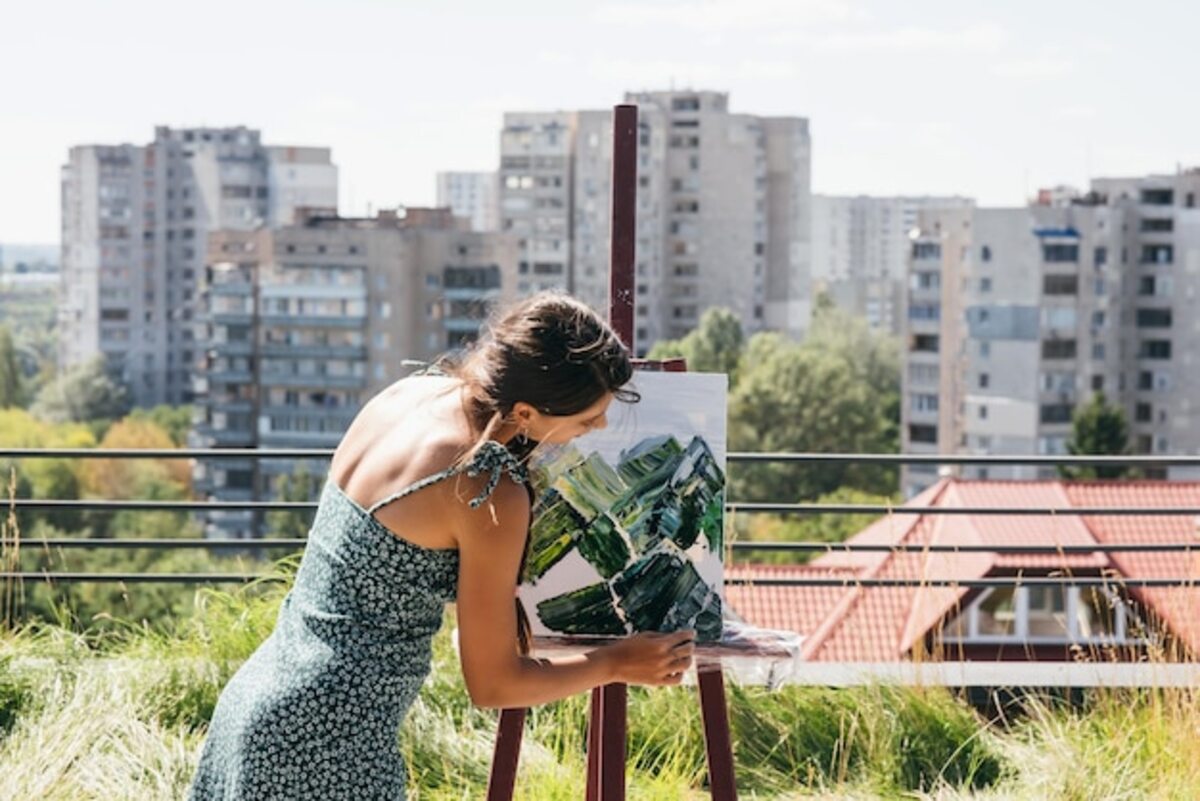The vitality of the environment in the valuation of your property

The vitality of the environment is a key factor in the valuation of your property, whether in a rural or urban setting. In a country like Costa Rica, where nature and urban development coexist, understanding how these elements influence your real estate investment can make a difference. This article will explore the characteristics that make each type of location have its own appeal, as well as its impact on the appreciation of your property. Join me to discover how to maximize the value of your investment according to its context!
The connection between nature and well-being: why does the rural attract?
The connection between nature and well-being is a phenomenon that has gained great relevance in recent decades. More and more people seek refuge in rural environments, where the natural beauty not only provides a pleasant landscape but also promotes a higher quality of life. Being surrounded by mountains, rivers, and abundant vegetation has a positive impact on individuals' mental and physical health. Studies have shown that contact with nature reduces stress, improves mood, and can even increase productivity. Therefore, it is understandable that many people are drawn to properties located in rural areas, where they can enjoy those benefits.
Furthermore, the growing awareness of sustainability and ecology has led to a shift in buyer priorities. The pursuit of a lifestyle more connected to the environment makes rural properties increasingly desirable. Open spaces and the ability to grow one's own food resonate with those who value a healthier and more self-sufficient life. This trend not only affects personal well-being but also property valuation; well-maintained properties in rural areas tend to retain their value or even increase it due to this growing demand for healthy and sustainable environments. Thus, investing in a rural property can be seen as a smart decision not only from a financial perspective but also from an emotional and social standpoint.
2. Advantages of the urban environment: accessibility and services within reach.
The urban environment offers a series of advantages that make it an undeniable attraction for those looking to maximize the value of their property. Accessibility is one of the main benefits, as urban areas usually have efficient public transportation infrastructure and various access routes. This facilitates mobility for both residents and visitors, thus increasing the flow of people and potential buyers or tenants. Additionally, proximity to workplaces and educational centers allows residents to enjoy a better quality of life, which translates into greater interest in properties located in these areas.
The services available in the urban environment also play a crucial role in real estate valuation. Supermarkets, restaurants, hospitals, and recreational centers are just a few examples of the offerings that are within reach of homes in these areas. This convenience not only enhances the daily experience of residents but also elevates the neighborhood's appeal for those seeking a dynamic and connected lifestyle. Consequently, properties located in well-equipped urban environments tend to maintain their value and even increase their appreciation over time, making this option a strategic choice for those interested in investing in real estate.
3. The impact of infrastructure on real estate valuation.
Infrastructure plays a fundamental role in real estate valuation, as it determines accessibility and quality of life in a given area. In urban environments, proximity to basic services such as schools, hospitals, and supermarkets can significantly increase a property's appeal. Additionally, investments in public transportation, roads, and bike lanes not only facilitate residents' mobility but can also encourage commercial development in the area. Therefore, properties located in areas with well-developed infrastructure tend to experience sustained increases in their value.
In rural areas, although it may seem that infrastructure has a lesser impact, it is equally crucial. The availability of paved roads and access to basic services such as drinking water and electricity are determining factors in attracting potential buyers. Properties located near tourist centers or recreational areas also benefit from this infrastructure, as they can offer a more appealing lifestyle for those looking to escape urban bustle. Thus, understanding how these features influence the environment not only helps to correctly value a property but also provides opportunities to maximize its long-term appreciation.
4. Green spaces vs. built spaces: the dilemma of buyers.
The choice between green spaces and built environments is a common dilemma among property buyers, as each option offers unique benefits that can influence their quality of life. Green spaces, such as parks and natural areas, not only enhance the aesthetics of the environment but also promote a healthier lifestyle by facilitating outdoor activities and contributing to stress reduction. Additionally, properties near these spaces tend to have higher value, as buyers appreciate the peace and well-being they provide.
On the other hand, built environments offer convenience and accessibility to essential services such as schools, hospitals, and shopping centers. Proximity to these amenities can be a deciding factor for many families looking to balance their time between work and personal life. However, it is important to consider how urban development affects the quality of the environment. An area that is too urbanized can lead to issues such as noise and visual pollution, which could result in a decrease in property appeal in the long term. Thus, buyers must carefully evaluate their personal priorities to determine what type of environment aligns best with their needs and future investments.
5. Current trends: where are market preferences heading?
Current trends in the real estate market reflect a significant shift in buyer preferences, as they increasingly seek properties that offer not only comfort but also a connection to their surroundings. In this sense, sustainability has become a fundamental pillar; homes that incorporate eco-friendly practices and responsible materials tend to be more valued. Additionally, the demand for outdoor spaces and green areas is on the rise, as homeowners look for retreats that allow them to enjoy nature without straying too far from urban conveniences. Therefore, properties located in environments that promote a healthy and sustainable lifestyle are experiencing a notable increase in their valuation.
Another relevant aspect is the importance of technology in the modern home. Smart homes, equipped with devices that enhance energy efficiency and facilitate daily life, are increasingly attractive to buyers. This trend towards digitalization not only elevates everyday comfort but also contributes to a higher value when selling or renting. In this way, properties that integrate advanced technological solutions along with a well-planned natural or urban environment are positioning themselves favorably in the current market, marking a clear direction towards which contemporary consumer preferences are heading.
6. How security influences the choice of location.
Safety is one of the most determining aspects when choosing the location of a property. Areas with high levels of safety tend to attract more buyers, which in turn increases demand and property values in that area. In an environment like Costa Rica, where tranquility and well-being are highly valued, living in a safe neighborhood not only improves the quality of life for its residents but also translates into a more solid and profitable long-term investment. The perception of safety can influence the purchasing decision for both families and investors, which can make a significant difference in the final price.
Additionally, statistics on crime and the presence of public security services can significantly affect the property's value. Areas with a low crime rate tend to have a prestige that attracts professionals and families seeking stability. This also impacts other important factors such as nearby schools, local businesses, and job opportunities. Therefore, when considering a property in Costa Rica, it is vital to investigate not only the physical condition of the property but also the social environment and its level of security; this will ensure not only your personal well-being but also the continuous growth of the property's value over time.
7. Lifestyle and local culture: determining factors for investors.
The lifestyle and local culture are determining factors that can significantly influence any buyer's investment decision. In places like Costa Rica, where cultural diversity is rich and palpable, investors must consider how these characteristics affect the appeal of a property. Access to cultural activities, local festivals, indigenous cuisine, and community traditions not only enrich the quality of life for those living there but also attract tourists and new residents. This translates into increased demand for properties in those areas, which in turn drives their appreciation.
Additionally, an environment that reflects a strong cultural identity tends to foster a sense of community among its inhabitants. This can translate into deeper connections between neighbors and an atmosphere conducive to social and economic development. Investing in properties located in areas where the local lifestyle promotes sustainability, ecotourism, or artisanal practices can significantly increase long-term value. Therefore, understanding how your property fits within the cultural and social mosaic of the area is crucial to maximizing its appreciation potential.
8. The effect of tourism on rural and urban properties.
Tourism has a significant impact on the valuation of both rural and urban properties. In rural settings, the arrival of tourists can transform an area that was previously considered quiet and isolated into an attractive destination, which in turn raises the value of local properties. This is because visitors seek authentic experiences close to nature, which gives country houses or cabins a new meaning. Investment in tourist infrastructure, such as restaurants and recreational activities, also helps to improve the quality of the environment and, therefore, the appreciation of these homes.
In the urban context, the effect of tourism can be equally powerful. Areas that attract tourists often experience economic revitalization, which translates into improvements in public services and overall infrastructure. Neighborhoods well-positioned to welcome visitors tend to see an increase in demand for rentals and property sales. This phenomenon not only benefits current property owners by increasing the value of their investments but can also incentivize the development of new real estate projects. However, it is crucial to find a balance between tourism growth and local well-being to ensure sustainable appreciation and preserve the essence of the place.
9. Strategies to increase your property's value based on its surroundings.
To increase the value of your property according to its surroundings, it is crucial to conduct a detailed analysis of the unique characteristics of the area in which it is located. Consider aspects such as accessibility, available services, and recreational opportunities offered by the neighborhood. For example, if your property is situated near parks, quality schools, or shopping centers, highlight these advantages in any promotional material. Furthermore, improving the exterior presentation of your home can make it more attractive to potential buyers; a well-maintained facade and garden can make a difference in their perception of value.
Another effective strategy is to get involved in community initiatives that promote the development and beautification of the surroundings. Participating in local projects or neighborhood associations not only helps you establish connections with other residents but also contributes to creating a more attractive and safe environment. Safety and cleanliness are decisive factors for many buyers; by actively participating in these improvements, you not only benefit your community but also indirectly increase the value of your property by making it more desirable within the local real estate market.



